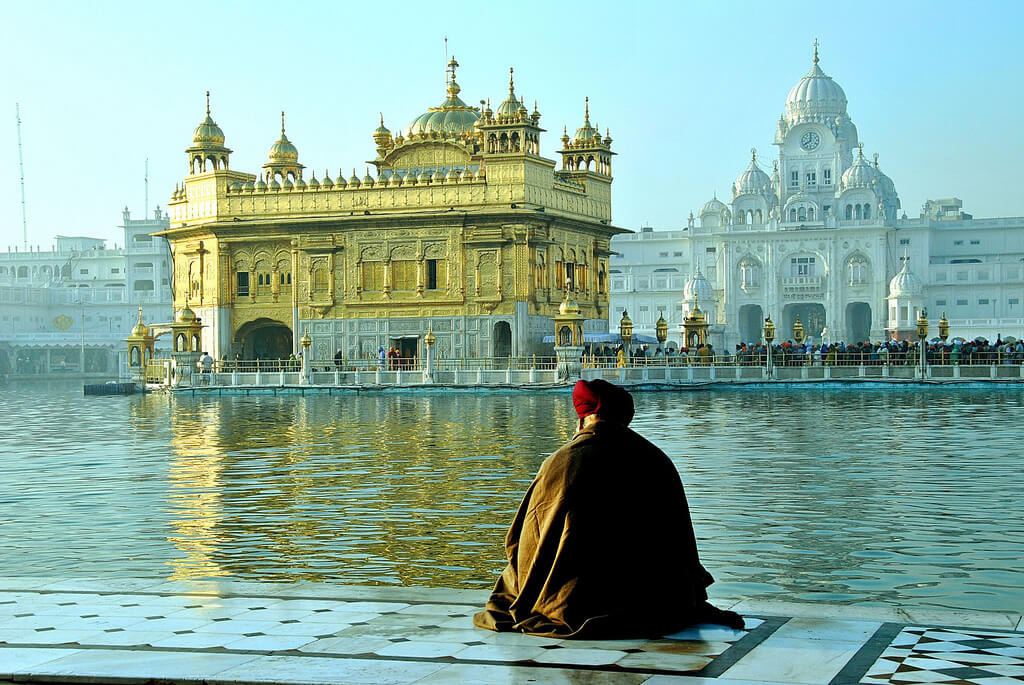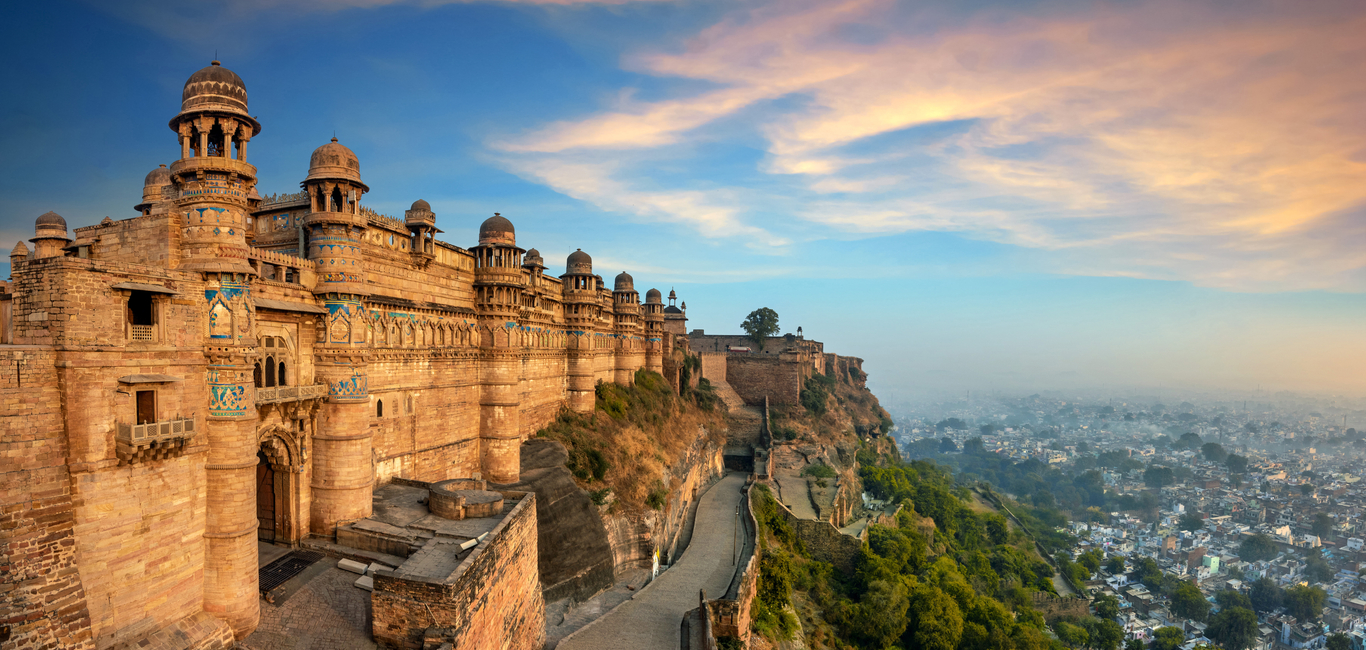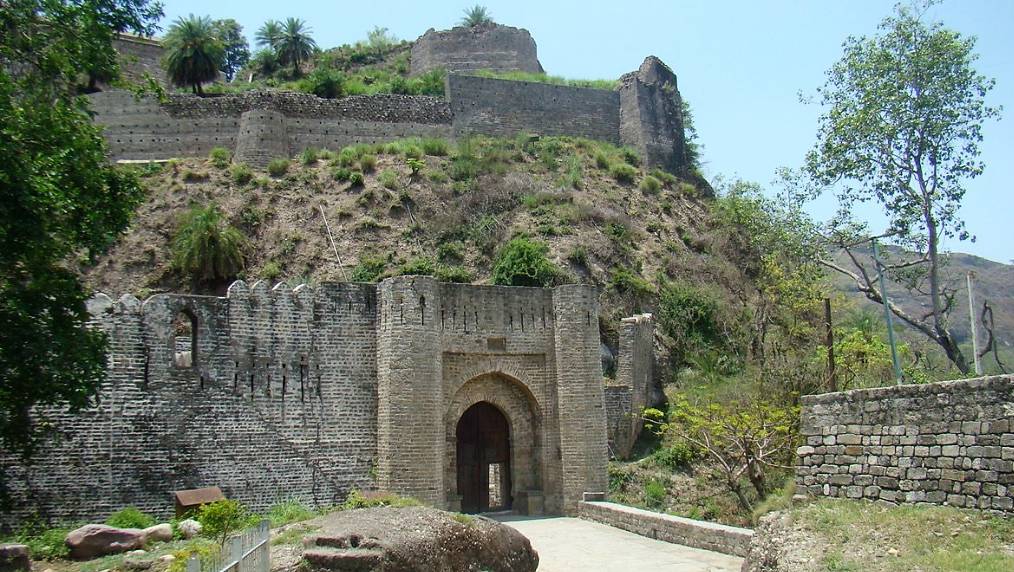
Thanks to an organized infrastructure and daily work system, doing ‘darshan’ at this hallowed shrine is relatively easy and always a pleasant and rewarding experience.
The shrine’s noble story began with the Fourth Sikh Guru, Guru Ram Das Sahib Ji, sanctifying the ‘Pool of Nectar’ in the 16th Century. The pool itself had long been considered blessed with miraculous healing powers. Lord Rama’s twin sons had supposedly been taught the Ramayana here. In 1574, Guru Ram Das set up home -known as Guru-ka-Mahal- by the side of the pool, bought the pool and its surrounding land and excavated the tank to construct a shrine at its center.
In 1588, the Fifth Sikh Guru, Guru Arjan Dev Sahib Ji, invited the Muslim Sufi divine, Hazrat Mian Mir of Lahore to ceremoniously lay the temple’s foundation stone. The Guru’s followers settled down in the neighborhood, forming a small town called Ramdaspur, which derived its later name, Amritsar, from the holy tank. During the Guru’s lifetime, the town grew in stature.
Amritsar is very well connected with Delhi with direct flights, and several daily trains including Shatabdi Expresses with convenient early morning and evening departures. There are also convenient overnight trains. If you want to drive from Delhi, allow yourself ten hours, including meal stoppages. Ambala and Jalandhar are two convenient halting points.
Once you arrive at the Golden Temple, almost all one’s needs are catered to. If you want information on the shrine, just visit the ‘Information Centre’ located just outside the main entrance.
If you want to stay at the temple itself, just visit the concerned office for details and bookings. Over 500 rooms are available, most free, some at a nominal cost.

If you’re staying elsewhere and carrying baggage, deposit it at the baggage room located just by the main entrance. One deposits one’s shoes at a designated spot, collects one’s token, and enters from the main gate. If you aren’t carrying a cloth to cover your head, they’ll give you one at the entrance. Just ensure you aren’t carrying on you any cigarettes or alcohol.
Descending into the amphitheatre, one is confronted by the stunningly beautiful sanctum sanctorum shimmering in the water of the holy tank. Join the stream of devotees in a clockwise direction, before doing ‘darshan’ in the sanctum sanctorum.
If keen on a holy dip, do so anywhere, but the exact spot at ‘Dukhbhanjan Beri’ is considered particularly sacred. Ladies have the privilege of bathing in two specially designated, closed-in areas that provide complete privacy. Pershad is available just outside the causeway leading to the main shrine.
The Gurdwara’s main structure is 150 meters square, stands at the centre of the sacred pool, approached by a 60 meters long causeway. The Hari Mandir (Sanctum Sanctorum) stands on a square platform, its lower part marble, upper portion embellished with gilded copper plates. Intricate wall and ceiling inlay murals form its ornate interior. The first floor features a pavilion known as the Shish Mahal (Mirror Room), with another, smaller room above.
All three floors contain the holy Guru Granth Sahibs, placed under jewel-studded canopies. It is in front of the Guru Granth Sahib that devotees bow and touch their foreheads to the ground.
Definitely worth the experience is doing ‘darshan’ of the Guru Granth Sahib during the simple, but stunningly beautiful and powerful opening and closing ceremonies, wherein the holy book is carried on a palanquin from its nighttime resting place to the Hari Mandir early in the morning, and then back at 10 pm.
Langar is served day and night on a daily basis in the huge Guru Ram Das Hall. You collect your plate and cutlery at the door and sit anywhere you can inside the building. A normal meal comprises dal, vegetable, and chappati. If you wish to do ‘Seva’, just go to the washing area and help wash the dishes, or ask to be allowed to serve the food to the devotees.
Photography is allowed everywhere except in the Sanctum Sanctorum.
The Hari Mandir (sanctum sanctorum) apart, the temple complex’s other major landmarks are the Akal Takht, a massive marble structure that acts as a podium for important religious discussions and issues, the museum and library with priceless Sikh relics, the giant ‘langar hall’ (community kitchen), where thousands sit alongside to eat, and the sprawling accommodation units.
One can also conveniently do darshan at several smaller shrines adjoining the Golden Temple. Within ten minutes walk are architecturally beautiful shrines like Baba Atal Sahib, Babek Sar, and the ‘Shahidi’ (martyr’s) shrine, all tracing their links with the Sikh Gurus.
The great religious and spiritual significance of the Golden Temple apart, Amritsar offers a pilgrimage cum cultural and gourmet trip. While in town, don’t miss out on visiting the famed dhabhas with their ‘chole bhature’ and trying out the renowned local specialties like lassi, and ‘Amritsari Fish’. It’s definitely worth spending an hour for some dry fruit and spice shopping, with fair doses of bargaining.
Around the temple, busy bazaars tend to their business. Just off the temple’s entrance lies Jallianwalla Bagh. Entrance is free.
The Sikh Gurus encouraged everyone, irrespective of caste and creed, to reside in Amritsar. The Hari Mandir was made open on all four sides, signifying open entry to all.




